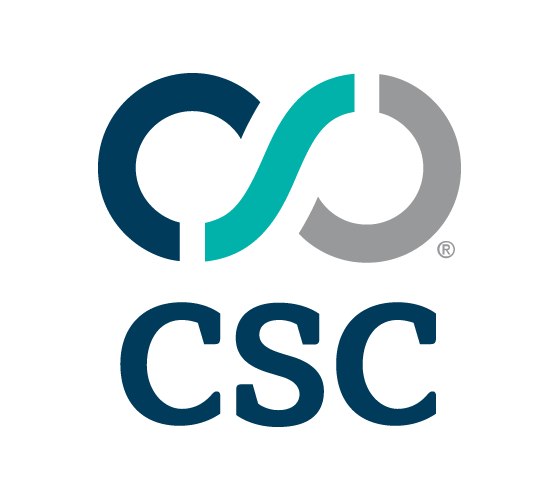

 Departing ICANN CEO Fadi Chehadé has penned a goodbye letter to the organisation's Board as he prepares to leave this March. The 7-page letter reads like a long list of Chehadé's achievements since he took over the helm in 2012. Whilst there can be little doubt about Chehadé's tireless energy and dedication to making ICANN a more effective governance mechanism for the Internet, his celebration of the last four years seems to overlook one important opportunity. more
Departing ICANN CEO Fadi Chehadé has penned a goodbye letter to the organisation's Board as he prepares to leave this March. The 7-page letter reads like a long list of Chehadé's achievements since he took over the helm in 2012. Whilst there can be little doubt about Chehadé's tireless energy and dedication to making ICANN a more effective governance mechanism for the Internet, his celebration of the last four years seems to overlook one important opportunity. more
 Google. BMW. Dell. Canon. Deloitte. Chanel. Microsoft. Audi. Cisco. Leaders in their industries, household names, game changers in business and technology. And just some of the brands that have launched their .brand TLDs so far in 2016. As we reach the mid-way point of this year, it provides a fitting checkpoint at which to reflect on the progress we've seen over the last six months. more
Google. BMW. Dell. Canon. Deloitte. Chanel. Microsoft. Audi. Cisco. Leaders in their industries, household names, game changers in business and technology. And just some of the brands that have launched their .brand TLDs so far in 2016. As we reach the mid-way point of this year, it provides a fitting checkpoint at which to reflect on the progress we've seen over the last six months. more
 The Registration Operations Workshop (ROW) was conceived as an informal industry conference that would provide a forum for discussion of the technical aspects of registration operations in the domain name system and IP addressing. The 10th ROW will be held online on Tuesday, June 8th, 2021 at 13h00-17h00 UTC. Click to learn more about the discussion topics and registration details. more
The Registration Operations Workshop (ROW) was conceived as an informal industry conference that would provide a forum for discussion of the technical aspects of registration operations in the domain name system and IP addressing. The 10th ROW will be held online on Tuesday, June 8th, 2021 at 13h00-17h00 UTC. Click to learn more about the discussion topics and registration details. more
 The domain name system is in good health. But it's about to get even better. The Domain Name Association (DNA), the Internet domain industry's trade association, undertook an effort in 2016 it named the Healthy Domains Initiative (HDI). It's an ambitious, self-motivated effort to build on the DNS' already secure and stable platform and meet select challenges head-on, before they develop. more
The domain name system is in good health. But it's about to get even better. The Domain Name Association (DNA), the Internet domain industry's trade association, undertook an effort in 2016 it named the Healthy Domains Initiative (HDI). It's an ambitious, self-motivated effort to build on the DNS' already secure and stable platform and meet select challenges head-on, before they develop. more
 I wish cancer research didn't exist. Imagine a world without cancer, where a cure existed to eradicate this disease. Today, the best way for us to achieve this is through cancer research, and extremely bold goals like this require game-changing innovation. Fittingly, the .cancerresearch Top Level Domain will launch on World Cancer Day (February 4) and use this fantastic new digital platform to show that cancer, its treatments and its cures, are not beyond us. more
I wish cancer research didn't exist. Imagine a world without cancer, where a cure existed to eradicate this disease. Today, the best way for us to achieve this is through cancer research, and extremely bold goals like this require game-changing innovation. Fittingly, the .cancerresearch Top Level Domain will launch on World Cancer Day (February 4) and use this fantastic new digital platform to show that cancer, its treatments and its cures, are not beyond us. more
 With IPv4 addresses becoming scarcer, there has been talk that a trading market will develop. The idea is that those holding addresses they do not really need will sell them for a profit. More alarming is that there have been a few articles about how the Regional Internet Registries (RIR) are contemplating creating such a market so that they can regulate it, conceding that it will happen anyway and taking the "if you can't be 'em, join 'em" attitude. This is all a bit disturbing. Maybe I'm naïve, but it's a little unclear to me how an unsanctioned trading market could really operate without the RIRs at least being aware... more
With IPv4 addresses becoming scarcer, there has been talk that a trading market will develop. The idea is that those holding addresses they do not really need will sell them for a profit. More alarming is that there have been a few articles about how the Regional Internet Registries (RIR) are contemplating creating such a market so that they can regulate it, conceding that it will happen anyway and taking the "if you can't be 'em, join 'em" attitude. This is all a bit disturbing. Maybe I'm naïve, but it's a little unclear to me how an unsanctioned trading market could really operate without the RIRs at least being aware... more
 With 1,675 satellites launched and 500,000 requests for service in the United States alone, SpaceX Starlink clearly leads all would-be providers of low Earth orbit (LEO) internet service to consumers. However, it is arguable that Telesat Lightspeed is in the lead, or contending for the lead with SpaceX, in non-consumer enterprise, government, mobile backhaul, mobility and rural community markets. more
With 1,675 satellites launched and 500,000 requests for service in the United States alone, SpaceX Starlink clearly leads all would-be providers of low Earth orbit (LEO) internet service to consumers. However, it is arguable that Telesat Lightspeed is in the lead, or contending for the lead with SpaceX, in non-consumer enterprise, government, mobile backhaul, mobility and rural community markets. more
 One of the most prominent denial of service attacks in recent months was one that occurred in March 2013 between Cloudflare and Spamhaus... How did the attackers generate such massive volumes of attack traffic? The answer lies in the Domain Name System (DNS). The attackers asked about domain names, and the DNS system answered. Something we all do all of the time of the Internet. So how can a conventional activity of translating a domain name into an IP address be turned into a massive attack? more
One of the most prominent denial of service attacks in recent months was one that occurred in March 2013 between Cloudflare and Spamhaus... How did the attackers generate such massive volumes of attack traffic? The answer lies in the Domain Name System (DNS). The attackers asked about domain names, and the DNS system answered. Something we all do all of the time of the Internet. So how can a conventional activity of translating a domain name into an IP address be turned into a massive attack? more
Internet users welcomed the New Year this year with a controversy that reaches to the roots of the Internet itself. January 1, 1983 was the day computer systems on the ARPANET were required to switch over to the TCP/IP protocol. This year marks the 20th anniversary of that event.
Several news stories appeared on the Internet before or on January 1, 2003 heralding January 1, 2003 as the twentieth birthday of the Internet. Other news stories questioned calling this date the birthday of the Internet. To have the date of the Internet's birthday be the subject of a controversy is appropriate, given the nature and history of the Internet. In its early development, the Internet grew and flourished because researchers were encouraged to debate their differences. In this environment, collaborative work thrived. more
 About two months ago, I got together with some fellow DNS engineers and sent a letter to the U. S. Senate explaining once again why the mandated DNS filtering requirements of S. 968 ("PIPA") were technically unworkable. This letter was an updated reminder of the issues we had previously covered... In the time since then, the U. S. House of Representatives has issued their companion bill, H. R. 3261 ("SOPA") and all indications are that they will begin "markup" on this bill some time next week. more
About two months ago, I got together with some fellow DNS engineers and sent a letter to the U. S. Senate explaining once again why the mandated DNS filtering requirements of S. 968 ("PIPA") were technically unworkable. This letter was an updated reminder of the issues we had previously covered... In the time since then, the U. S. House of Representatives has issued their companion bill, H. R. 3261 ("SOPA") and all indications are that they will begin "markup" on this bill some time next week. more
 Back in June, I wrote about the progress of .brands at the half-way point of the year. At the time, the total number of domains registered in .brand TLDs had grown by 238% in just six months, including a number of significant, high-profile .brands that had publicly launched. I also shared several broad patterns of usage that had started to emerge. As we approach the end of 2016, let's take a look at the year that was. more
Back in June, I wrote about the progress of .brands at the half-way point of the year. At the time, the total number of domains registered in .brand TLDs had grown by 238% in just six months, including a number of significant, high-profile .brands that had publicly launched. I also shared several broad patterns of usage that had started to emerge. As we approach the end of 2016, let's take a look at the year that was. more
 The Domain Name System is often though of as an integral part of the Internet. Without it, how can you ever locate anything? Well, quite easily, thank you very much. DNS is used implicitly for many services, such as web browsing. It also includes explicit extensions for a few applications such as e-mail. (I'm talking here about DNS the system, not DNS the technology that can be re-purposed to things like ENUM.) But the most notable thing about DNS is its receding importance... more
The Domain Name System is often though of as an integral part of the Internet. Without it, how can you ever locate anything? Well, quite easily, thank you very much. DNS is used implicitly for many services, such as web browsing. It also includes explicit extensions for a few applications such as e-mail. (I'm talking here about DNS the system, not DNS the technology that can be re-purposed to things like ENUM.) But the most notable thing about DNS is its receding importance... more
 The term "Internet Governance" has become an area of particular attention in part as a consequence of widespread recognition that the Internet represents an important area of national interest for all countries seeking to participate in the benefits of global electronic commerce, distance learning, access to the encyclopedic wealth of information on the Internet, and in the social dimension that the Internet is creating. From the perspective of governments, the Internet is simultaneously a technology that promises high economic value for parties making use of it and a challenge in that it is unlike all other telecommunications media previously invented. more
The term "Internet Governance" has become an area of particular attention in part as a consequence of widespread recognition that the Internet represents an important area of national interest for all countries seeking to participate in the benefits of global electronic commerce, distance learning, access to the encyclopedic wealth of information on the Internet, and in the social dimension that the Internet is creating. From the perspective of governments, the Internet is simultaneously a technology that promises high economic value for parties making use of it and a challenge in that it is unlike all other telecommunications media previously invented. more
 Brands are an asset and have a value for organizations, as they generate revenue: Customers are happy to pay a premium for a brand they love. They will show a preference and be loyal to a brand they trust. There are various ways to estimate the value of a brand. An excellent point of reference is Interbrand, which for many years has followed the top 100 brands and publishes their value based on a combination of three factors. more
Brands are an asset and have a value for organizations, as they generate revenue: Customers are happy to pay a premium for a brand they love. They will show a preference and be loyal to a brand they trust. There are various ways to estimate the value of a brand. An excellent point of reference is Interbrand, which for many years has followed the top 100 brands and publishes their value based on a combination of three factors. more
 Let's be clear: right now, any statements on when (or even if) a follow-up round of new gTLD applications might happen are pure conjecture. The first round closed on April 12, 2012. Since then, the pressure has been increasing for ICANN to actually live up to the guidebook premise of launching "subsequent gTLD application rounds as quickly as possible" with "the next application round to begin within one year of the close of the application submission period for the initial round." But that deadline is clearly not going to be met. more
Let's be clear: right now, any statements on when (or even if) a follow-up round of new gTLD applications might happen are pure conjecture. The first round closed on April 12, 2012. Since then, the pressure has been increasing for ICANN to actually live up to the guidebook premise of launching "subsequent gTLD application rounds as quickly as possible" with "the next application round to begin within one year of the close of the application submission period for the initial round." But that deadline is clearly not going to be met. more
Sponsored byVerisign

Sponsored byIPv4.Global

Sponsored byDNIB.com

Sponsored byRadix

Sponsored byWhoisXML API

Sponsored byCSC

Sponsored byVerisign
